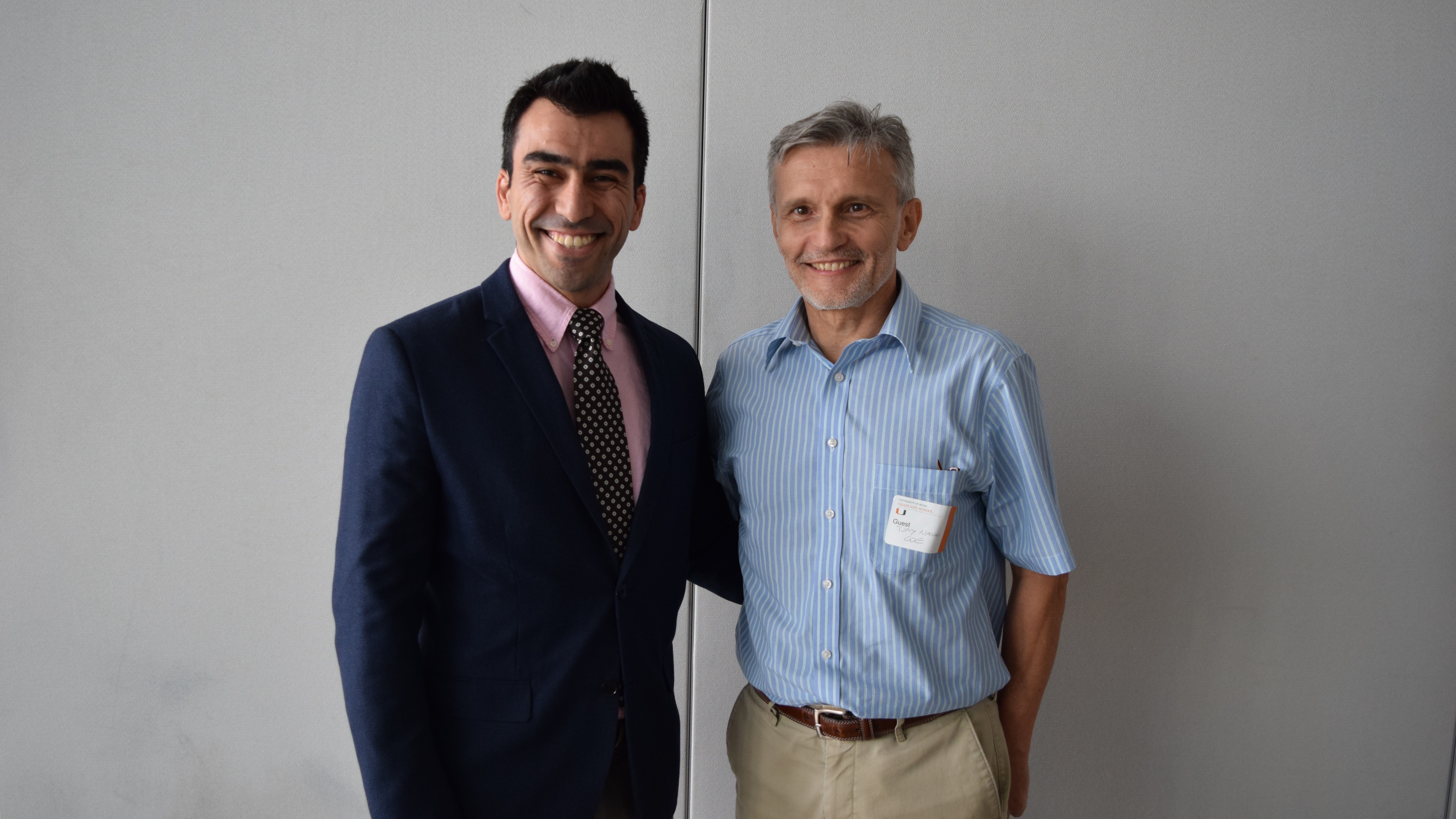When Morteza first joined the University Miami, he had no idea how much it would change his perspective on concrete, a material he had worked with since he was 10 years old. An industry-wide problem of building with conventional concrete is its susceptibility to corrosion from chloride, which in addition to weakening the steel bars used to reinforce concrete it creates cracking and spalling of the concrete itself.
Morteza grew up working in the construction business with his father. ‘’I love concrete, my life is about concrete,” he described. Before arriving at UM, Morteza had focused on making concrete, which traditionally is composed of freshwater because seawater would make the steel reinforcements rust faster, more resistant to corrosion. But here he found an innovative, unconventional, and sustainable approach to the problem, which is making and building with concrete using seawater instead of freshwater and Glass Fiber Reinforced Polymer (GFRP) bars instead of steel bars for reinforcement.
“During my master’s, everything was about steel,” recalled Morteza. “The steel companies told us: make your concrete better so the chloride won’t penetrate it; steel has to be there. That was my mentality when I came here. Working with this technology opened up a whole new world for me. I had to switch my frame of mind of chloride avoidance to steel-less concrete. It made a lot more sense to use this technology and easily get rid of the corrosion issue,” he stated.
Currently, Morteza is fully dedicated to the SEACON Project, led by Dr. Antonio Nanni, a professor in the College of Engineering’s Department of Civil, Architectural, and Environmental Engineering. SEACON is a revolutionary type of concrete that combines seawater, salt-contaminated aggregates, and GFRP bars, a non-corrosive replacement for steel bars made of glass fiber, to create a stronger, more sustainable building material.
Morteza is very passionate about the SEACON project because it helps conserve freshwater, which is only 1% of the water available in the world. Approximately 180 billion gallons of freshwater a year are used to produce concrete. “This is enough water for the needs of least 100 million people in places with insufficient access to water,” he stated. By using seawater to make concrete, Morteza argues, countries around the world, like in the Persian Gulf where he is from, could preserve their freshwater for drinking.
“The reason I came to UM was the SEACON project. I saw its potential after I read Dr. Nanni’s proposal,” he admitted. Morteza joined the College of Engineering in fall 2015 to work on the SEACON Project, which had just garnered $800,000 in funding from Infravation, the European Commission’s initiative for infrastructure innovation.
Since joining UM, Morteza has been an integral part of the first constructions using SEACON. Recently, the team attained a partnership with the Florida Department of Transportation for the construction of a bridge in Homosassa, FL, which will be the first bridge in the United States to use both GFRP bars and seawater concrete. At this time, Morteza is focused on patenting the SEACON technology and proliferating its use through educating construction industry stakeholders.

